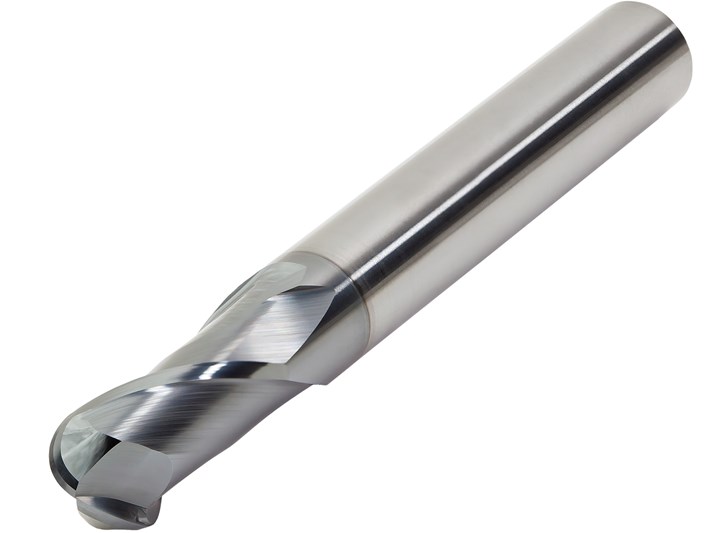End Mill Series Well Suited for Precision 3D Machining
M.A. Ford has launched the TuffCut 3D family of end mills with a two-flute ball nose design used for machining of plastic injection molds, die-cast molds and press dies.

Photo Credit: M.A. Ford
Focused on the needs of today’s mold builders, M.A. Ford has developed the TuffCut 3D, 250 Series end mill. This two-flute, high-performance ball nose design is geared toward precision 3D machining in steels that are ≤50 Rc.
Before the development of the 250 Series, the 156 Series was always the go-to tool for 3D surfacing applications in the die/mold market segment, M.A. Fords says, which could often lead to various challenges when working in softer (≤ 50 Rc) steels. The 156 Series features geometry that is focused on hard milling in the 52-65 Rc range, which has the tendency to cause smearing and premature tool wear when working in these softer materials.
With a metric diameter range of 1-16 mm with multiple overall lengths available, the 250 Series is often used in the machining of plastic injection molds, die-cast molds and press dies. It features the same high-precision radius form tolerance (±.010 mm) as the 156 Series, which allows for very accurate and repeatable finishing. In addition, the high-performance web geometry enables excellent cutting action when cutting with the tip of the end mill on gradual 3D part features.
With the use of a substrate more suited for materials ≤50 Rc and M.A. Ford’s ALtima Blaze coating, the 250 Series end mill is said to be a durable and economical choice for accurate 3D finishing.
Related Content
-
Revisiting Some Hot Runner Fundamentals
What exactly does a hot runner do? If you’ve been in the injection molding industry for any length of time, you might think the answer is obvious, but it is not.
-
Advantages and Disadvantages of Copper and Graphite Electrodes
Both copper and graphite provide approximately the same end result, so it is important for a shop to consider the advantages and disadvantages of each material in order to discover what would work best in their shop floor environment.
-
Treatment and Disposal of Used Metalworking Fluids
With greater emphasis on fluid longevity and fluid recycling, it is important to remember that water-based metalworking fluids are “consumable” and have a finite life.





.png;maxWidth=300;quality=90)






